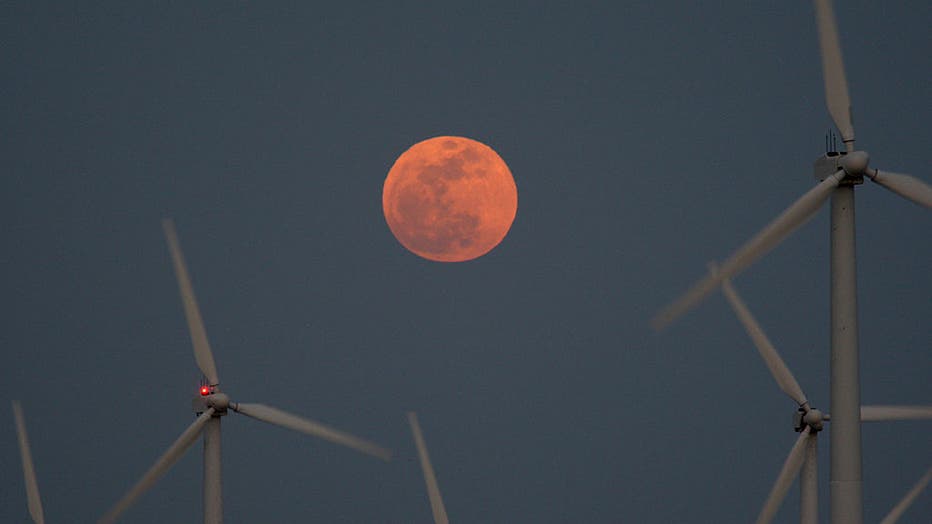The Eta Aquarid meteor shower peaks this weekend: Where and how to watch

Possible meteor streaks across Birmingham night sky
A suspected meteor was seen falling through the sky of Birmingham, England, in the early hours of Saturday, December 30. (Credit: @JohnStew82 via Storyful)
The Eta Aquarid meteor shower will peak this weekend, as it usually does around this time of year.
In 2024, the peak will occur between May 5 and May 6 in the hours before dawn.
According to the American Meteor Society, the maximum rate for shooting stars in a clear sky will be about 50 per hour.
RELATED: NASA captures Horsehead Nebula 'mane' in finest, clearest detail to date
The meteor shower occurs when the Earth passes through a dusty trail of space debris left behind by comet 1P/Halley, perhaps the most famous comet, according to NASA.

The bright light of the full moon also hides all but the brightest meteors of the Eta Aquarid meteor shower, the remnant debris trail of Halley's Comet. (Photo by David McNew/Getty Images)
Earth passes through dust grains from Halley’s path twice a year to create two meteor shower events – the Orionids in October and the Eta Aquarids in May.
How to watch the Eta Aquarid meteor shower
According to NASA, the meteor shower can be viewed in the northern and southern hemispheres, though the southern is more preferred.
Viewers should try to view the meteor shower well away from city lights or streetlights.
RELATED: Mystery planet? New evidence suggests huge 9th planet in solar system
Also, NASA says viewers should go to the area with a sleeping bag, blanket, or lawn chair. They should then lie flat on their backs with their feet facing east and look up, taking in as much of the sky as possible.

Lyrid meteor shower peaks Sunday into Monday
NASA Ambassador Tony Rice explains why the Lyrid meteor shower might be difficult to see this year because of the nearly full Moon.
After about 30 minutes in the dark, the eyes will adapt and begin to see meteors, according to NASA. Be patient – the show will last until dawn, so you have plenty of time to catch a glimpse.
NASA’s Meteoroid Environment Office head William Cooke also recommends avoiding cell phone screen light to enhance one's view.
Why are they called the Eta Aquarids?

An Eta Aquarid meteor streaks over north Georgia on April 29, 2012. (NASA/MSFC/B. Cooke)
The Eta Aquarids are named after the point in the sky where the meteor showers appear to come from, the constellation Aquarius.
While the constellation is not the true source of the meteor showers, it helps orient stargazers as they look to the infinite sky to try to find the Eta Aquarids.
FOX Weather and FOX News contributed to this report. This story was reported from Los Angeles.

